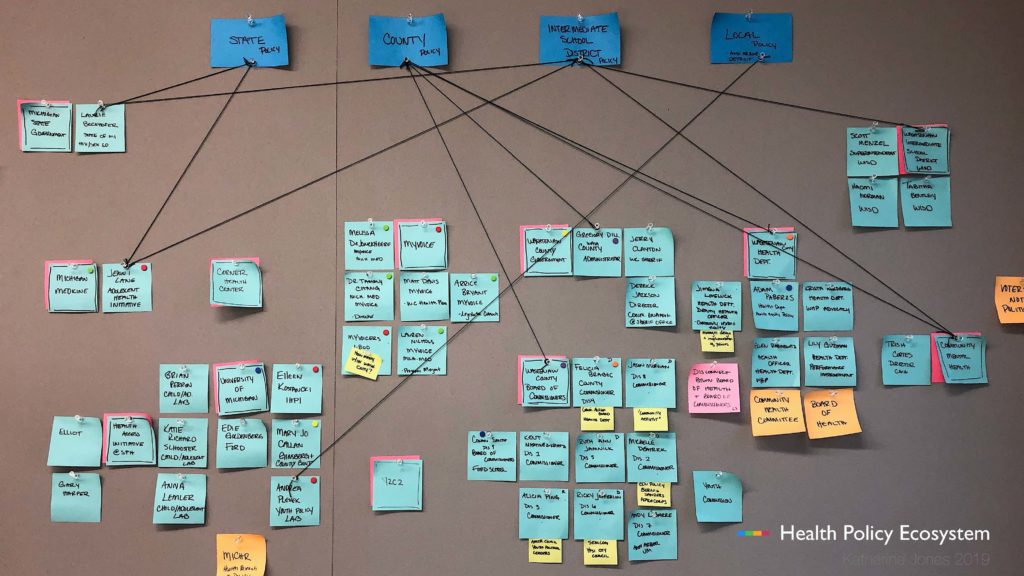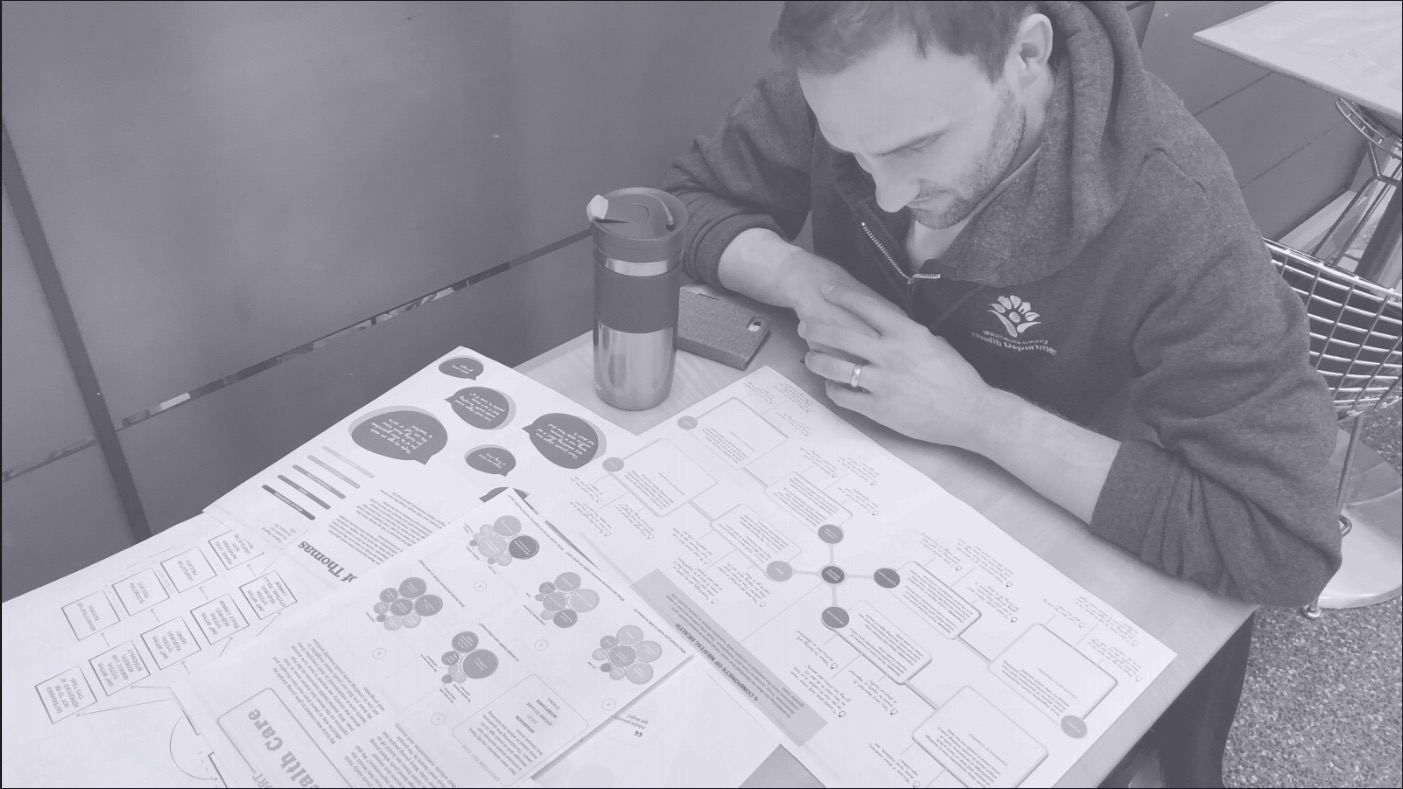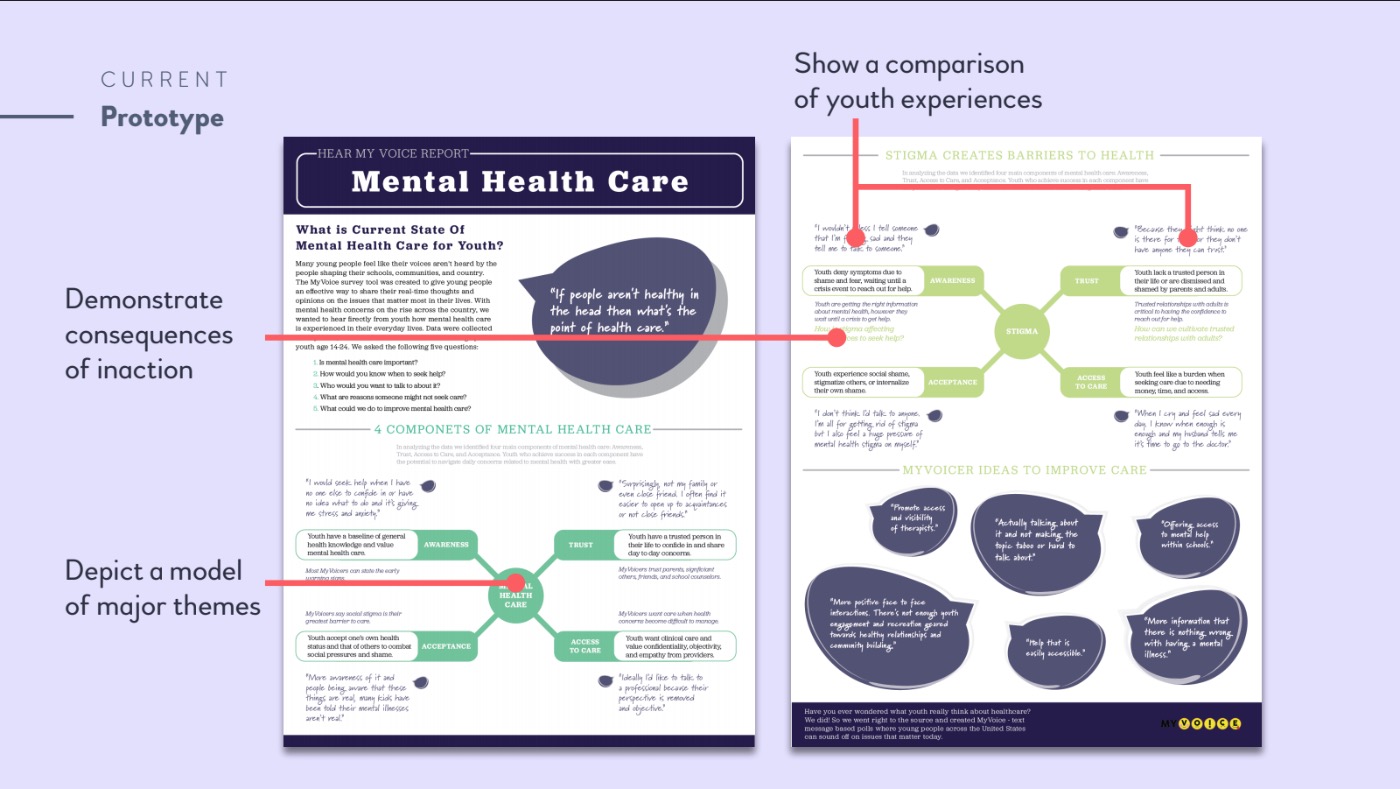How do we get people in power to actually listen to and respond to citizens’ concerns? How can research inform policy? How do we bring youth voice to Washington D.C., board rooms, and local municipal decision-making?
MyVoice member Katherine has taken on these big questions as part of her life’s work as an integrative designer and community organizer. Over the past year and a half, Katherine has worked with members of the MyVoice team and with public health policy leaders in Southeast Michigan to demystify how a policy is born. She’s worked to diagram and draw out how public health decisions are made and how MyVoice can lay down pathways to bring youth voice into the complex process.
One of over 60 iterations Katherine made, on her thesis journey
This endeavor formed the basis of Katherine’s Master’s thesis in Integrative Design at the University of Michigan. She presented her work this spring at a public forum, in a talk entitled “A Case for Youth-Informed Public Policy.” Check out her presentation slides.
Katherine took on the task of tracing how a policy is born. Through interviews, policy analysis, and design, she sought to clarify: Who the players are in policy making, what roles those players take, and what they need in order to make decisions. From there, she employed iterative design techniques to develop more effective ways to bring in youth voice at the critical points of influence in the policymaking decision process. In her process, Katherine assessed and deconstructed some of the primary artifacts that researchers develop in their communication with policymakers: including the one-page policy brief and infographics. She developed prototypes of modified artifacts and tested them with public health officials in Washtenaw county.
“The problem Katherine’s solving is universal,” notes MyVoice founder Tammy Chang. “There are many unwritten rules to forming public policy. It involves a lot of pieces, people, politics. That intimidates people.”
We are grateful for Katherine’s thorough inquiry and will continue the work to connect the right people, with the right information, at the right time, in ways that center youth choice in the policy decisions that impact them.



